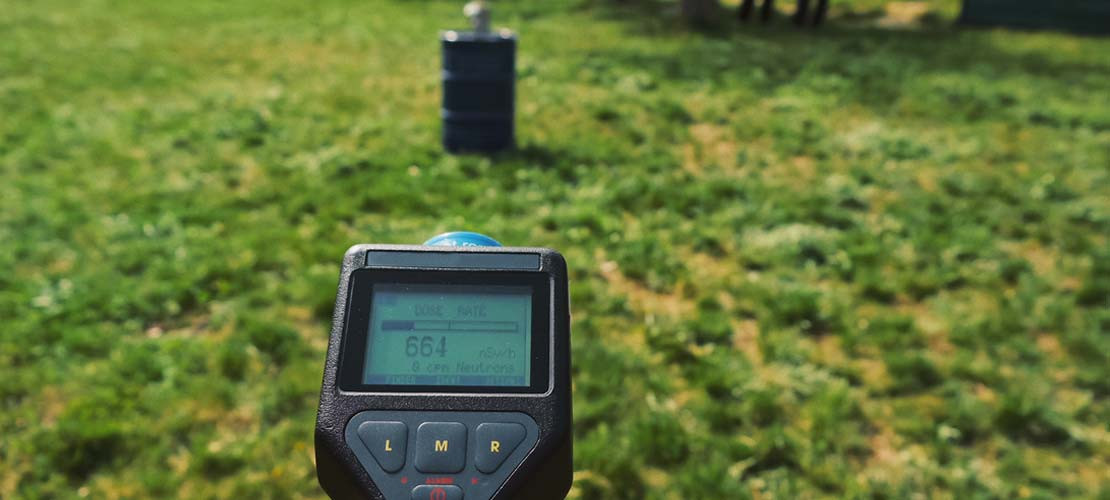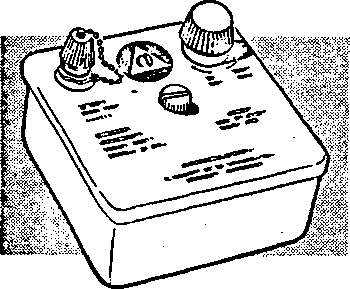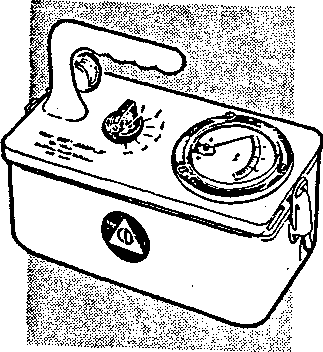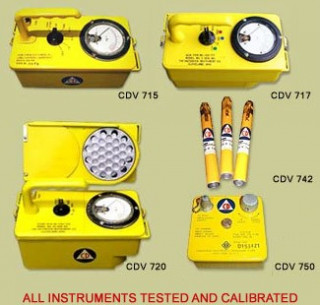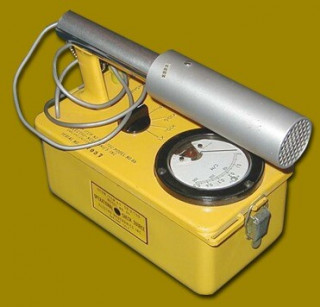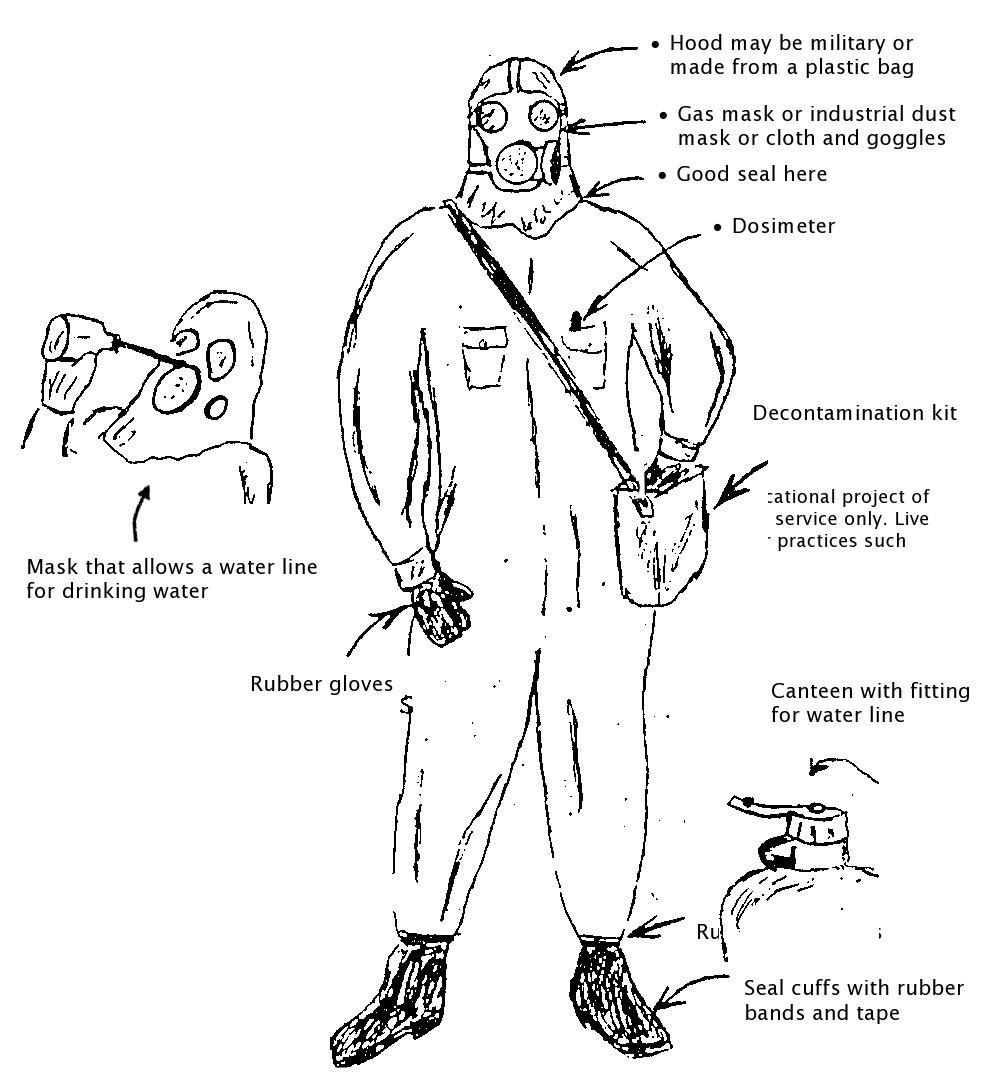In the aftermath of nuclear war or following a nuclear plant accident, high levels of radiation could threaten your survival location. Perhaps government authorities can broadcast advisories to help you protect yourself; perhaps not! This information can assist with selection of reliable monitoring equipment for independent protective action.
RADIATION
Natural nuclear radiation consists mainly of alpha and beta particles and gamma rays (figure 1). The particles are a hazard if taken into the body or in the case of beta, remains on the skin. High energy gamma is very penetrating and therefore most hazardous. Special detection and measuring equipment is needed to determine dose or dose rate in a field of radiation or radioactive contamination.
1. Alpha particles are not very penetrating. A sheet of paper will stop them, as will human skin. As a result, they do not pose a hazard externally; however, they cause a lot of damage along a very short path. If alpha-emitting particles gain entry into the body — through open wounds, breathed into the lungs, or swallowed — the alpha particles can be very harmful to the tissues close to them.
2. Beta particles are usually more penetrating than alpha particles, but the range is still limited. Beta particles from some radioactive materials can travel only 1/30 of an inch in air, or 1725,000 of an inch in tissue. Beta particles from other sources can travel only slightly farther. Radiation burns are caused by exposure of the skin to this type of radiation.
3. Gamma rays are very penetrating and can pass right through a person's body with only a portion being absorbed. External exposure to large amounts of gamma radiation can cause radiation sickness and death. Gamma radiation is the most prevalent type of radiation released by a nuclear explosion.
DOSE AND DOSE RATE
Radiation dose is measured in REM (Roentgen Equivalent Man) or R (Roentgen), which applies only to gamma. Dose rate for gamma is measured in milleRoentgens or Roentgens per hour (mR/hr or R/hr) (1,000 mR=1R) and indicates the dose that will be absorbed if you remain in that same spot for one hour while radiation remains constant. Apparently, moderate exposure to radiation is a long term health hazard. Exposure to high levels of gamma radiation from fallout following nuclear war is immediately life threatening (figure 2) and protective actions must be taken for survival. Alpha and beta are usually measured in CPM (counts per minute) and hazard levels are difficult to interpret. Faced with high level gamma, they can usually be ignored with relative safety.
EQUIPMENT
The following is the author's professional opinions as to useable and affordable equipment, available at the time of writing. Items costing near $1,000 or over and those considered unsuitable for field use; are not included. Anyone wishing information on more sophisticated or expensive items may contact the author through Live Free or respond to the author's advertising (RadEx Div., CL-EM Enterprises, Louisville, KY). See attachment for illustrations and photos.
Kearny Fallout Meter (KFM)
Many people cannot afford or do not wish to invest in their own personal radiation equipment. Good, reliable manufactured equipment is best and easiest to use, but everyone should obtain instructions and make a KFM, even though they may already have surplus or commercial equipment as it may become inoperative at a critical time. The KFM is homemade from common, easily obtained materials. (Refer to illustrations on page 3 and photos on 4.)
Dosimeters
Rely only on "pen" type dosimeters. For nuclear war, those measuring 0-600R (CDV-746) are best. Do not go under measurement of 0-200R (CDV-742). Commercial equivalents are made by Dosimeter Corporation, Victoreen and Baird. A charger is required to "zero" these dosimeters. New dosimeters and chargers cost under $100 each. Military surplus dosimeters and chargers may be useable (your choice) if you are sure they have been tested prior to sale.
High Range Monitors
High range is an arbitrary term; for our purposes we will use the Roentgen range. The higher your monitor reads the better. Older military and civil defense monitors should be avoided if they use unusual batteries or use old miniature electron tubes. CD equipment made in the 1960's may have been stolen property or disposed of because of maintenance problems with a particular model. You should have some assurance that used or surplus sets have been checked out against a standard radiation source and operating properly (the "circuit check" doesn't mean much with some sets). Don't buy a set without operating and maintenance instructions. The following is a listing of some sets in current use:
- CDV-710, 0-50 R/hr, disposed of as obsolete.
- CDV-715, 0-500.R/hr, civil defense standard survey meter.
- CDV-720, 0-500 R/hr, civil defense substitute standard.
- CDV-717, 0-500 R/hr, standard remote reading survey meter.
- Autonnic Model 80, 0-500R/hr survey meter (made in UK).
- Autonnic Model 81, 0-500R/hr remote reading survey meter.
- Dosimeter Corp. Mini RAD, 0-50 R/hr
- Radiation Sentry RD-11, 150 mR/hr - 50 R/hr (no meter)
- Radiation Sentry RD-100, 100 mR/hr – lO R/hr (no meter)
Low Range Monitors
These include conventional Geiger counters made by Victoreen, Dosimeter Corp. and others, along with the CDV-700. They are useful in a low radiation area, such as inside an excellent shelter or several weeks after a nuclear war, for checking food, water, and personnel for contamination. The Radiation Alert-Mini may also be used. The Radiation Sentry RD-1 and RD-2 are not Geiger counters, but vented ionization chambers of low range, useful for area monitoring and detecting airborne contamination. The RD-2 is probably the best low cost personal monitor available, if living near a nuclear plant as it will detect radioactive gases efficiently.
USE AND OTHER STUFF
Radiation monitoring is not some voodoo performed by people in white coats or uniforms. Anyone of average intelligence can understand radiation and operate monitoring equipment. If you can't read the meter, get one without a meter. Read all instructions (several times) and check out dosimeters and monitors once a month. Keep dosimeters charged to zero. Buy the best batteries and keep spares in the refrigerator. Don't leave batteries in chargers or monitors, unless you use the area monitor all the time. Read up on EMP and protect your monitoring equipment the same as radios.
After a nuclear attack, your life will depend upon knowing if fallout has arrived, if your shelter is giving you proper protection and when fallout has decayed to a safe radiation level. If in a zone of heavy fallout, lack of that knowledge will probably result in a very nasty death. Buy or build a monitor NOW!
SUGGESTED READING
Asimov, Isaac - Understand Physics, Volume III (Mentor paperback)
Chester, Michael - Particles (Mentor paperback)
Kearny, Cresson H. - Nuclear War Survival Skills (ORNL)
Emergency Management - U.S.A. (FEMA) **
Protection 1n the Nuclear Age (FEMA) **
Handbook for Radiological Monitors (FEMA) **
** Address: Federal Emergency Management Agency, Washington DC 20472
ILLUSTRATIONS
SUPPLEMENTAL EQUIPMENT
In dusty outside conditions or underbrush, some anti-contamination (anti-C) clothing may be desirable. This may be purchased in a "kit," including coverall (hooded or with separate hood), inner and outer gloves, inner and outer shoe covers and a respirator. Some also include goggles and cleaning supplies.You can put together your own kit (see L.F.I.'s). However, coverall should be close woven cotton, Tyvek or some other material that "breathes." All openings should be sealed with masking tape.
It should be noted that protective clothing does not shield against radiation. It can keep the materials giving off the radiation from contaminating good clothing, boots, and body, if used properly. It also keeps contamination from living space if anti-C clothing is removed before entering.
(NOTE: CL-EM Enterprises carries a complete line of radiation detection and monitoring equipment, including most of the equipment illustrated. Address: 4109 Graf Drive, Louisville, KY 40220.)
SURVIVAL NOTEBOOK
Home-made Protective Fallout Suit
Live Free Inc., "Directions"; Vol. 5, No. 8, April 1982
NOTE: A fallout protective suit is not a substitute for a fallout shelter, but it will give some protection while you seek or construct a good shelter. NEVER wear a contaminated suit into the shelter;
Materials:
- Snow goggles
- Dust mask
- Plastic or rubber rain poncho, Raid suit or Tyvek paper laboratory coverall; large enough to fit over winter clothing.
- Rubber gloves
- Plastic grocery or garbage bags
- Gas mask (military or industrial)
- Decontamination kit with tack rags, alcohol prep pads, surgical scrub pads, etc.
- Rubber bands
- Tape to seal wrists and ankles to cuffs and hood to suit if not a one piece.
- Dosimeter
- Rubber over-boots
- M-1 Military canteen or equivalent with rubber top fitting for water line .
- Water line
